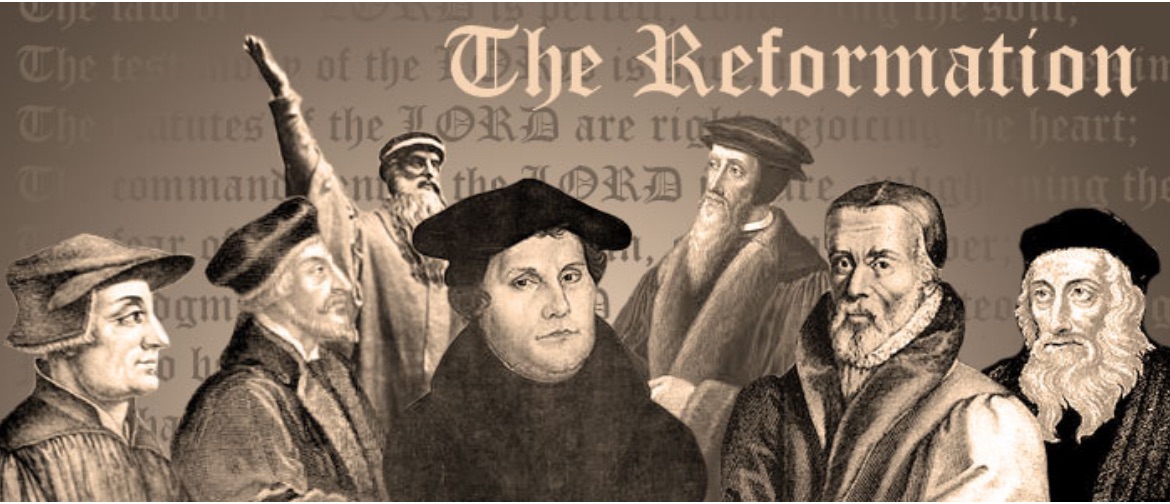
An Online Class of First Presbyterian Church of Aiken
Session No. |
Topic |
| Session 1 | John Huss |
| Session 2 | Ulrich Zwingli |
| Session 3 | Martin Luther |
| Session 4 | John Calvin |
| Session 5 | John Knox |
| Session 6 | John & Charles Wesley |
Course Introduction
Overview This course is designed to be a self-study, online course for those interested in learning about the major protestant reformers. The class covers six sessions looking at the lives and work of Martin Luther, Ulrich Zwingli, John Calvin, John Knox and Charles and John Wesley. It also studies pre-reformation leaders such as John Hus. Enrollment and Participation Each class session poses a series of questions at the end. If you would like to engage in a conversation about those questions complete them and send them to me at etwimber@hotmail.com. I will respond to your answers or engage in a conversation with you about each session by telephone or via Facetime or Skype. Just email me at etwimber@hotmail.com to request a meeting time an I will be happy to schedule it for us to discuss the class session by phone, via Facetime or on Skype. We may also convene group meetings of the class using the Zoom application on our computers. If you are unfamiliar with how to use Zoom, this online tutorial link should be useful: https://support.zoom.us/hc/en-us/articles/201362193-Joining-a-Meeting . If you have additional questions about this online course or any of its content or would like to discuss church membership and participation feel free to contact Rev. Wimberley at 239.405.4164 or by email at etwimber@yahoo.com. Reformation Overview: (History.com) The Protestant Reformation was the 16th-century religious, political, intellectual and cultural upheaval that splintered Catholic Europe, setting in place the structures and beliefs that would define the continent in the modern era. In northern and central Europe, reformers like Martin Luther, John Calvin and Henry VIII challenged papal authority and questioned the Catholic Church’s ability to define Christian practice. They argued for a religious and political redistribution of power into the hands of Bible- and pamphlet-reading pastors and princes. The disruption triggered wars, persecutions and the so-called Counter-Reformation, the Catholic Church’s delayed but forceful response to the Protestants. Dating the Reformation: Historians usually date the start of the Protestant Reformation to the 1517 publication of Martin Luther’s “95 Theses” (though others have argued that it began 100 years earlier with the work of John Hus). Its ending can be placed anywhere from the 1555 Peace of Augsburg, which allowed for the coexistence of Catholicism and Lutheranism in Germany, to the 1648 Treaty of Westphalia, which ended the Thirty Years’ War. The key ideas of the Reformation—a call to purify the church and a belief that the Bible, not tradition, should be the sole source of spiritual authority—were not themselves novel. However, Luther and the other reformers became the first to skillfully use the power of the printing press to give their ideas a wide audience. Germany and Lutheranism Martin Luther (1483-1546) was an Augustinian monk and university lecturer in Wittenberg when he composed his “95 Theses,” which protested the pope’s sale of reprieves from penance, or indulgences. Although he had hoped to spur renewal from within the church, in 1521 he was summoned before the Diet of Worms and excommunicated. Sheltered by Friedrich, elector of Saxony, Luther translated the Bible into German and continued his output of vernacular pamphlets. When German peasants, inspired in part by Luther’s empowering “priesthood of all believers,” revolted in 1524, Luther sided with Germany’s princes. By the Reformation’s end, Lutheranism had become the state religion throughout much of Germany, Scandinavia and the Baltics. Switzerland and Calvinism: The Swiss Reformation began in 1519 with the sermons of Ulrich Zwingli, whose teachings largely paralleled Luther’s. In 1541 John Calvin, a French Protestant who had spent the previous decade in exile writing his “Institutes of the Christian Religion,” was invited to settle in Geneva and put his Reformed doctrine—which stressed God’s power and humanity’s predestined fate—into practice. The result was a theocratic regime of enforced, austere morality. Calvin’s Geneva became a hotbed for Protestant exiles, and his doctrines quickly spread to Scotland, France, Transylvania and the Low Countries, where Dutch Calvinism became a religious and economic force for the next 400 years. England And the "Middle Way" In England, the Reformation began with Henry VIII’s quest for a male heir. When Pope Clement VII refused to annul Henry’s marriage to Catherine of Aragon so he could remarry, the English king declared in 1534 that he alone should be the final authority in matters relating to the English church. Henry dissolved England’s monasteries to confiscate their wealth and worked to place the Bible in the hands of the people. Beginning in 1536, every parish was required to have a copy. After Henry’s death, England tilted toward Calvinist-infused Protestantism during Edward VI’s six-year reign and then endured five years of reactionary Catholicism under Mary 1. In 1559 Elizabeth 1 took the throne and, during her 44-year reign, cast the Church of Englandas a “middle way” between Calvinism and Catholicism, with vernacular worship and a revised Book of Common Prayer. Useful Links: |